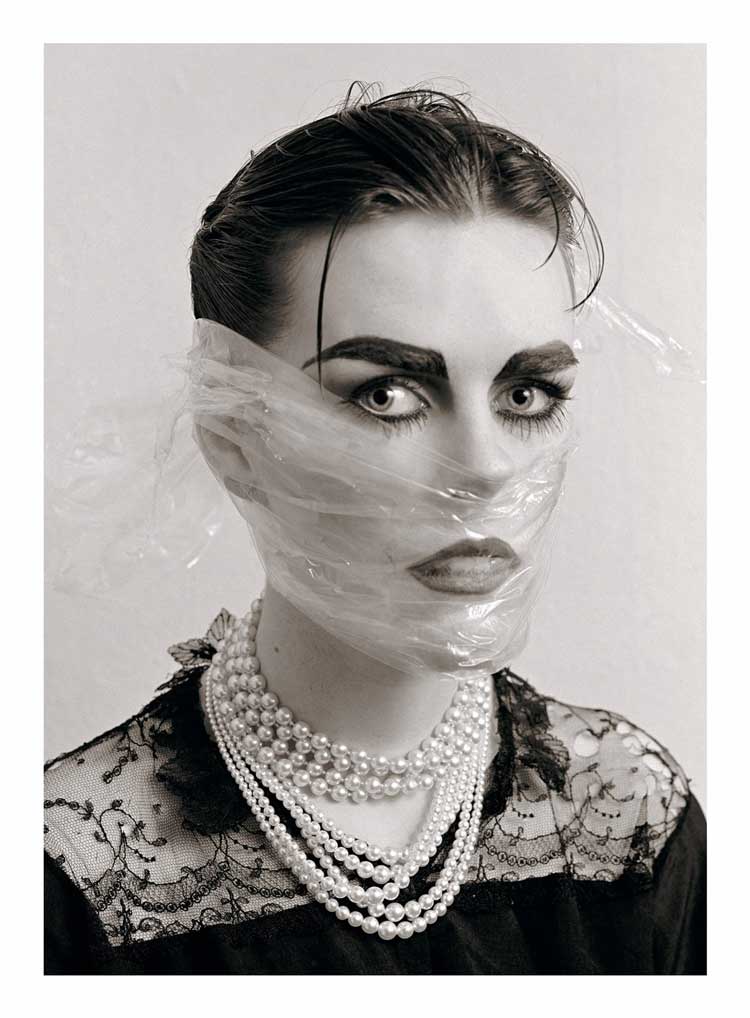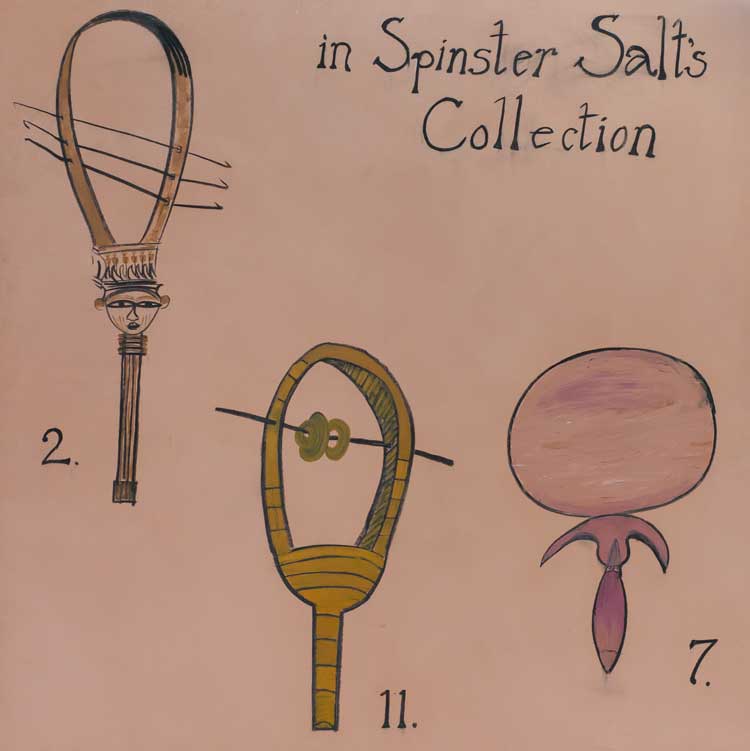
Dora Carrington, Iris Tree on a Horse, c1920s. © The Estate of Dora Carrington.
The Lightbox, Woking
23 September 2023 – 14 January 2024
by BETH WILLIAMSON
This jewel of an exhibition begins with a surprise. The image that anchors it, it turns out, is diminutive, an energetic little mixed-media work by Dora Carrington (1893-1932). Made around 1920, Iris Tree on a Horse is the talismanic image around which all else turns in this exhibition, but more of that later. With just shy of 30 works, the exhibition is a collaboration between the Women’s Art Collection at Murray Edwards College, University of Cambridge, and the Ingram Collection, sharing work from across the 20th and 21st centuries by women and non-binary artists. Founded in 1986, the Women’s Art Collection holds more than 500 works and is the largest collection of works by women artists in Europe and this is the first time it has partnered with a museum outside Cambridge. The Ingram Collection of Modern British Art is a private collection begun by entrepreneur and philanthropist Chris Ingram in 2002. Now with more than 600 artworks, the aim is to use the collection to ensure everyone has access to art regardless of their circumstances. It is a laudable aim.

Paula Rego, Ines de Castro, 2013 (detail). Oil on canvas. © The Estate of Paula Rego.
Through a relatively small selection of works, these two collections have come together to interrogate the myriad ways that artists express their spirit inside, an internal energy or feeling that, I suppose, spurs them on in their art practice and in life more broadly. Iris Tree on a Horse might be a tiny artwork, but its spirit and intent is huge, and it provides the overarching theme and the title for this exhibition. When in 1920 Carrington wrote to her friend the poet Iris Tree (1897-1968), she explained her reluctance to marry: “To marry him would not make it any better, because one cannot change a spirit inside.” In this powerful little image Carrington used oil, ink, silver foil and other media on glass to create one of her so-called “tinselled pictures”. Her depiction of Tree (who kept the work with her like a talisman) is upright, heroic and bold. It is Carrington’s depiction of Tree that anchors this exhibition, steadfastly supporting narratives, dialogues and sightlines that spark and sustain fresh thinking about the works on show.

Linder Hiding, but still not knowing, 1981-2010. © the artist.
The grouping of works in this show has been done with immense care and attention, establishing spaces for conversations among and between works. The sometimes unexpected dialogues between quite disparate works are especially satisfying to recognise. The exhibition’s curators have established strong associations between certain works, and the connections that visitors themselves might make are innumerable, so I will restrict myself to just a few examples here that serve to illustrate how this show achieves its aims. The etching Black Koan (1990) by American-born Liliane Lijn (b1939) hangs close to a work by Barbara Hepworth (1903-75) called Sculpture with Colour and Strings (1939/1961). Lijn’s koan refers to the Japanese short text form and its invitation to reflect or meditate. The particular example relates to a time in the artist’s life when she felt fragmented. Hepworth’s small sculpture was made when she moved to St Ives and reflects the cyclical movement of tides, waves and light throughout the day, as well as Hepworth’s deep connection to nature. Completing a neat trio of works is Insight (2017) by Hong Kong artist Man Fung Yi (b1968), a work made by burning incense on silk in a circular pattern that suggests the circle of life, all the more resonant of dialogue between interior and exterior as Yi was pregnant when she made the work. These three works, all made by very different artists and in different times, show the artists’ reflections on their physical and psychological responses to their internal experience in the outside world.

Lubaina Himid, In Spinster Salt’s Collection, 1989. © the artist.
An oblique sculptural spine runs through the gallery space. Looking left from the entrance to the gallery space, the eye is led from Looking at Her (1995) by the Kenyan born artist Trupti Patel (b1957) to Remembering Atefeh (2022) by the British potter, writer and activist Claudia Clare (b1962). From here, a work by Permindar Kaur (b1965) called Turbans (2012) comes swiftly into view. The strong narrative link between the works begins with Patel’s five-sided ceramic column with niches containing female body parts. Inside the sculpture, a small mirror is installed at eye-level, encouraging the viewer to look inside rather than look at the work. Immediately, the idea of women’s interior lives or spirit is brought to mind. Next to fall under our gaze is Clare’s emotive ceramic work Remembering Atefeh. Atefeh Sahaaleh was a 16-year-old Iranian girl who was hanged in public in 2004 for so-called “crimes against chastity”. In honour of this young girl, Clare made a large earthenware vase with a number of Iranian friends. Later, in 2011, they smashed it as part of a protest outside the Iranian embassy in London. Clare then lovingly reconstructed the work in Atefeh’s honour and inserted a photograph of the girl inside the vase. The spirit of protest against this violent act brings the work alive and propels the viewer across to Kaur’s sculptural wall-mounted Turbans, a group of nine stuffed blue-fabric heads, each adorned with a copper Sikh turban (a reference to Kaur’s Indian heritage) and, also made from copper, a pair of protuberances that droop downwards, perhaps representing a long moustache, except they are hard and claw-like. The playful yet menacing blend of colours and materials, and the suggestion of violence, make for a strangeness that speaks to Kaur’s meditations on migration, integration and identity. Nothing is ever quite as it seems on the surface of things.
,-2022.jpg)
Soheila Sokhanvari, Rhapsody of Innocence (Portrait of Monir Vakili), 2022. © the artist.
There are many other conversations to be had in this show. Its closing work is The Golden Girl (c1930) by Dod Procter (1890-1972). It is painted in the classical tradition, and the artist presents a girl with flaxen hair, clothing gently draped and flesh rich in tonal harmonies. As with other figures painted by Procter, it harks back to a classical ideal and echoes the timelessness and sculptural qualities associated with that. For the viewer of c1930, the painting allows them just for a moment to step outside the wake of war and traumatic remembering. For the contemporary viewer at the end of this exhibition, Procter’s work feels like a long deep exhale, a summing up of A Spirit Inside and a reminder to attend to inside and outside, mind, body and spirit with equal care.